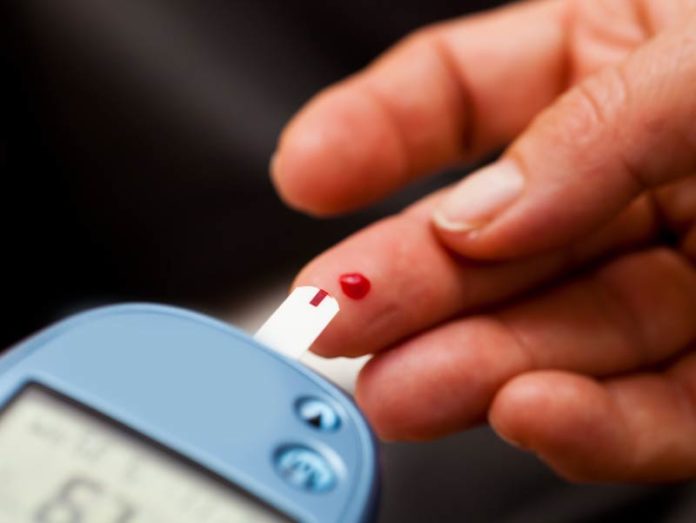Are you one of the 1 out of 3 diabetics who are undiagnosed?
According to the Centers for Disease Control and Prevention, in 2015 over 30 million Americans had diabetes.
And 7.2 million don’t know it yet.
That includes 3.6 million aged 45-64 – and 2.1 million people 65 and over.
In fact, one out of four seniors has diabetes.
Those aren’t Even the Scariest Numbers
The CDC estimates 84.1 million Americans have prediabetes.
Prediabetes means their blood sugar is not yet high enough to be classified as “official” diabetes, but they’re on their way. Their blood sugar is already too high, so it’s just a matter of time before their health declines to “official” diabetes.
If you have undiagnosed diabetes or prediabetes, it’s important you discover that as soon as possible. You certainly need to make lifestyle changes. And you may need medication to slow down the disease’s progression.
Diabetes is Highly Dangerous by Itself
According to the CDC, it was the 7th leading cause of death in 2015.
Too much sugar in your blood damages your blood vessels. That ruins your eyes because they depend on tiny capillaries. It also reduces blood circulation to your extremities, which is why some diabetics eventually need to have their feet amputated.
The excess sugar also leads to nerve damage, causing pain or numbness. That’s especially common in your legs, but can also causes problems in your digestive system, urinary tract and heart.
Diabetes is Also a Gateway to Other Fatal Diseases
The 7th leading cause of death figure is based on death certificates. It understates how much death diabetes causes.
That’s because many diabetes do not die from it directly, but from the heart attacks, strokes and kidney damages it can cause.
It’s also closely linked to increased rates of many kinds of cancer.
What is Diabetes
Your cells need to burn the sugar carried in your blood. The hormone insulin transports that sugar from your blood into your cells, so they can use it as fuel.
Eating too much fat (especially saturated fat) and simple, refined sugar makes your cells resist the effort of insulin to transport sugar from your blood to your cells – called insulin resistance. Your pancreas is forced to produce higher than healthy amounts of insulin to transport the sugar into your cells, where it’s needed for energy.
Therefore, the sugar builds up in your blood, damaging your blood vessels. While your cells feel starved.
When the diabetes is bad enough, you must inject insulin into your blood to control your sugar levels.
Warning Signs of Diabetes
* Excessive urination
When your blood sugar is too high, your kidneys can’t keep up with it, so it spills over into your urine.
* Excessive Thirst
Because you’re losing lots of water through urination, your body keeps demanding more water.
* Excessive Hunger
Your cells can’t get the sugar that’s in your blood, so you feel constantly undernourished.
* Fatigue
Your cells don’t receive the fuel they must burn to function, so of course you feel tired.
* Blurred vision
As blood sugar damages your blood vessels, fluid seeps into the lenses of your eyes.
* Slow-healing wounds
Because the sugar damages your blood vessels, they cannot transport oxygen and nutrients when you need to repair damaged tissue.
* Dark patches of skin discoloration and thickness
These are most prominent in the armpit, groin and neck.
Risk Factors of Prediabetes
If you have prediabetes, the symptoms are still mild, so you don’t notice them.
Being overweight indicates you have insulin resistance, part of the process of becoming diabetic.
However, some thin people also have insulin resistance.
Other risk factors for prediabetes:
* Age – (It’s a risk factor for everything, isn’t it?)
* Race – people of color are more at risk
* Sleep – working at night or not getting 7-8 hours a night raises your risk
* High levels of triglycerides
* Polycystic ovary syndrome
* Consuming high fat, oils and processed food
* Inactivity
What to Do Next
If you see you’re at risk of prediabetes or diabetes, go to your doctor for fasting glucose and HbA1c tests.
Even if you seem at low risk, improve your lifestyle. Don’t wait for a doctor to tell you.
Start:
* Sleeping 7-8 hours every night
* Getting moderate exercise every day
* Cutting way down on foods that are processed, full of oil and fat (especially saturated fat) and high in refined grains and sugars
* Eating many more vegetables, fruits, whole grains and beans
* Losing those excess pounds
If you’re already at risk, those lifestyle changes will improve your prognosis.
If you’re not already at risk, they’ll help you prevent future problems.








